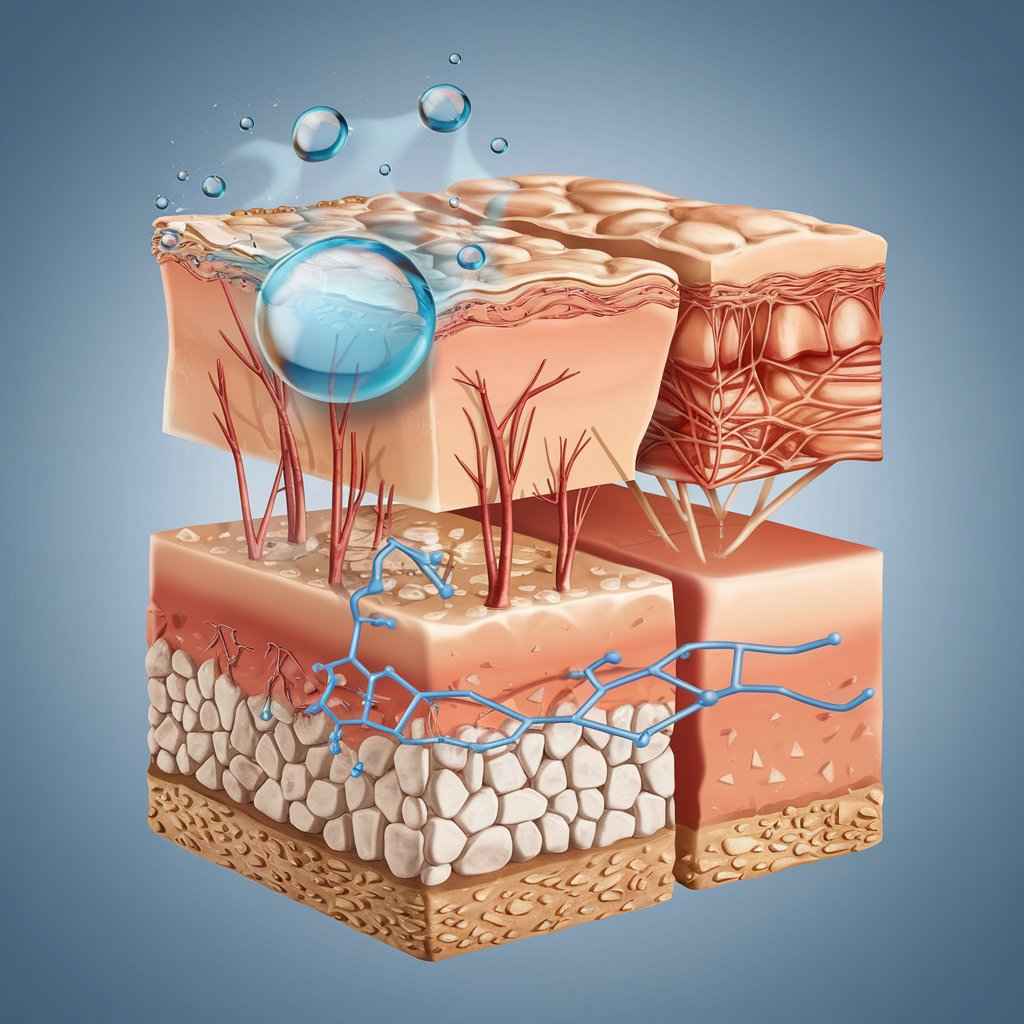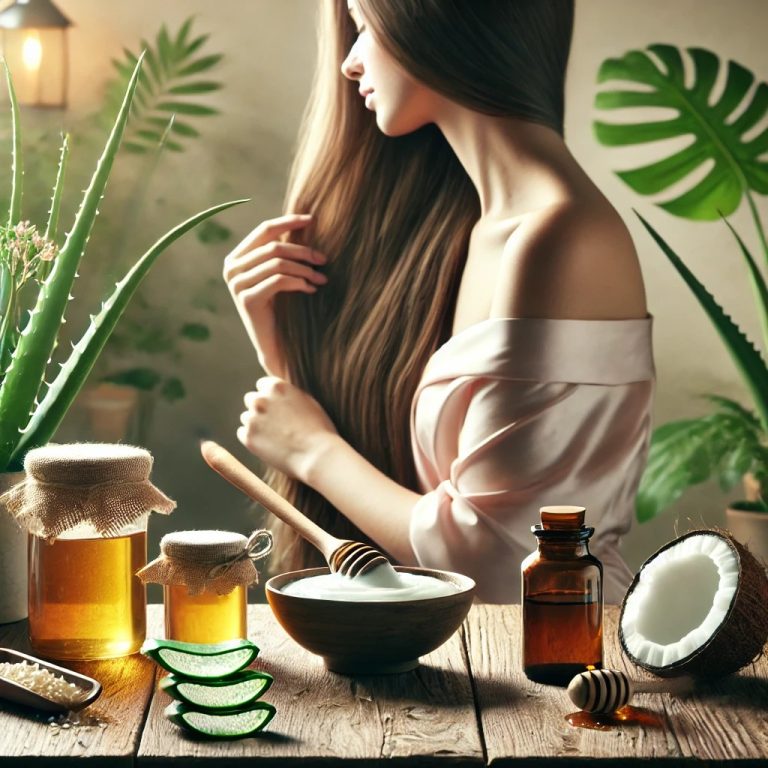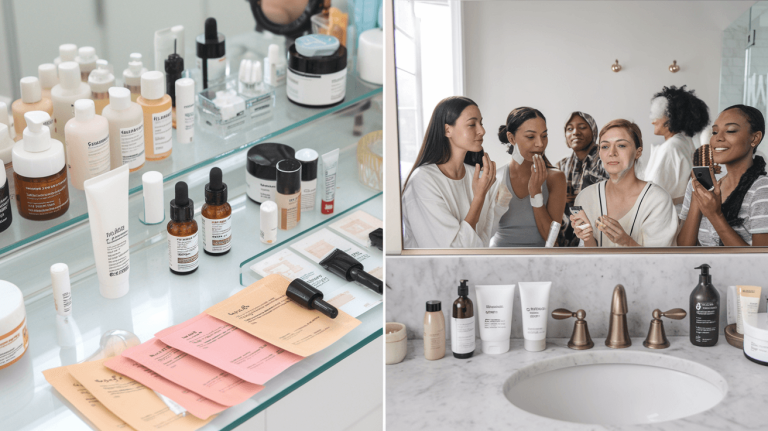Best anti-aging ingredients for women in their 30s

Last updated on December 7th, 2024 at 01:46 pm
Are you starting to notice those first subtle signs of aging? 😱 Don’t panic! Your 30s are the perfect time to kickstart an effective anti-aging skincare routine. But with countless products and ingredients flooding the market, how do you know which ones are truly worth your time and money?
Let’s face it: navigating the world of anti-aging skincare can be overwhelming. You want to preserve your youthful glow, but you’re unsure where to begin. The good news? Science has uncovered powerful ingredients that can help you combat fine lines, wrinkles, and dullness. By incorporating these into your routine now, you’ll be setting yourself up for radiant, healthy-looking skin for years to come.
Ready to discover the secret weapons in your fight against premature aging?
In this blog post, we’ll explore the best anti-aging ingredients for women in their 30s. From the gold standard retinoids to hydration heroes like hyaluronic acid, we’ll break down everything you need to know to build an effective anti-aging regimen.
Let’s dive in and unlock the key to maintaining your youthful complexion! 🔑✨
Understanding Skin Aging in Your 30s
As you enter your 30s, you may start noticing subtle changes in your skin. This is a crucial time to understand what’s happening beneath the surface and how to best address these changes. Let’s dive into the factors contributing to skin aging in your 30s and how they affect your complexion.

Hormonal changes and their effects
In your 30s, hormonal fluctuations begin to impact your skin more noticeably. These changes can lead to:
- Decreased oil production, resulting in drier skin
- Slower cell turnover, causing a duller complexion
- Increased sensitivity and potential breakouts
| Hormone | Effect on Skin |
|---|---|
| Estrogen | Decreases, leading to less collagen production |
| Testosterone | May increase, potentially causing adult acne |
| Cortisol | Stress-related increases can accelerate aging |
Environmental factors accelerating aging
Your skin faces daily assaults from various environmental factors, which can speed up the aging process:
- UV radiation from sun exposure
- Pollution and free radicals
- Lifestyle choices (smoking, alcohol consumption, poor diet)
These factors contribute to the formation of fine lines, wrinkles, and uneven skin tone. It’s crucial to protect your skin from these aggressors to maintain a youthful appearance.
Collagen loss and its impact
One of the most significant changes in your 30s is the gradual loss of collagen. Collagen is a protein that provides structure and elasticity to your skin. As collagen production slows down, you may notice:
- Fine lines and wrinkles becoming more apparent
- Loss of skin firmness and elasticity
- Slower wound healing and recovery
To combat these effects, incorporating ingredients that stimulate collagen production, such as retinoids and peptides, can be beneficial. Now that you understand the factors affecting your skin in your 30s, let’s explore the gold standard in anti-aging ingredients: retinoids.
Retinoids: The Gold Standard for Anti-Aging
Now that you understand how your skin changes in your 30s, let’s dive into one of the most powerful anti-aging ingredients: retinoids. These vitamin A derivatives are widely regarded as the gold standard in skincare for their ability to combat signs of aging.

How Retinoids Work
Retinoids work by increasing cell turnover, stimulating collagen production, and improving skin texture. When you use retinoids, you’re essentially telling your skin to behave like younger skin. This results in:
- Reduced fine lines and wrinkles
- Improved skin tone and texture
- Decreased acne breakouts
- Enhanced skin firmness
Different Types of Retinoids
There are several types of retinoids available, each with varying strengths and benefits:
| Type | Strength | Availability |
|---|---|---|
| Retinol | Mild | Over-the-counter |
| Retinaldehyde | Moderate | Over-the-counter |
| Adapalene | Strong | Over-the-counter |
| Tretinoin | Very strong | Prescription only |
Incorporating Retinoids into Your Routine
To get the most out of retinoids without irritating your skin, follow these steps:
- Start with a low concentration (0.01% – 0.03%) and use it 2-3 times a week.
- Apply a pea-sized amount to clean, dry skin in the evening.
- Wait 20-30 minutes before applying moisturizer.
- Gradually increase frequency as your skin tolerates it.
- Always use sunscreen during the day, as retinoids can increase sun sensitivity.
Potential Side Effects and How to Manage Them
While retinoids are incredibly effective, they can cause some initial side effects:
- Dryness
- Redness
- Peeling
- Increased sensitivity
To manage these, try:
- Using a gentle, fragrance-free moisturizer
- Applying retinoids over your moisturizer (“buffering”)
- Taking breaks between applications if irritation occurs
- Being patient – it can take 6-12 weeks to see full results
With consistent use, retinoids can significantly improve your skin’s appearance and health. As we move forward, we’ll explore how antioxidants can complement your retinoid regimen for even more powerful anti-aging benefits.
Antioxidants for Combating Free Radicals
Now that you understand how your skin ages in your 30s, let’s explore the power of antioxidants in your anti-aging skincare routine. Antioxidants are your skin’s best defense against free radicals, which are unstable molecules that contribute to premature aging.
Green tea extract: Soothing and defending
Green tea extract is a potent antioxidant that offers multiple benefits for your skin. It helps:
- Reduce inflammation
- Protect against UV damage
- Fight acne-causing bacteria
Incorporate green tea extract into your routine through serums or moisturizers for maximum efficacy.
Niacinamide: Multi-tasking powerhouse
Niacinamide, also known as vitamin B3, is a versatile ingredient that addresses various skin concerns:
- Improves skin texture
- Reduces fine lines and wrinkles
- Minimizes pore appearance
- Regulates oil production
Look for products containing 2-5% niacinamide for optimal results.
Vitamin E: Nourishing and repairing
Vitamin E is a fat-soluble antioxidant that:
- Moisturizes and softens skin
- Supports skin barrier function
- Enhances the efficacy of other antioxidants
Pair vitamin E with vitamin C for synergistic effects in your skincare routine.
Vitamin C: Brightening and protecting
Vitamin C is a powerhouse antioxidant that:
- Boosts collagen production
- Evens out skin tone
- Protects against environmental stressors
| Vitamin C Form | Stability | Skin Penetration |
|---|---|---|
| L-Ascorbic Acid | Low | High |
| Magnesium Ascorbyl Phosphate | High | Moderate |
| Ascorbyl Glucoside | High | Moderate |
Choose a vitamin C product with a concentration of 10-20% for best results.
By incorporating these antioxidants into your skincare routine, you’ll be well-equipped to combat free radicals and maintain youthful, radiant skin throughout your 30s. Next, we’ll explore how hydration plays a crucial role in your anti-aging strategy.

Hydration Heroes: Hyaluronic Acid and Ceramides
Now that you’re familiar with antioxidants, let’s dive into the world of hydration heroes. As you enter your 30s, maintaining skin hydration becomes crucial for a youthful appearance.
Benefits of Hyaluronic Acid
Hyaluronic acid is a powerhouse ingredient that can hold up to 1000 times its weight in water. Here’s why you should incorporate it into your skincare routine:
- Intense hydration
- Plumping effect, reducing the appearance of fine lines
- Improved skin elasticity
- Enhanced skin barrier function
How Ceramides Support Skin Barrier
Ceramides are lipids that play a vital role in maintaining your skin’s protective barrier. Here’s what you need to know:
| Ceramide Benefits | How They Work |
|---|---|
| Moisture retention | Lock in hydration |
| Barrier protection | Shield against environmental stressors |
| Skin repair | Support natural regeneration process |
| Anti-aging | Support the natural regeneration process |
Combining These Ingredients for Maximum Hydration
To achieve optimal results, you should use both hyaluronic acid and ceramides in your skincare routine. Here’s how to maximize their benefits:
- Apply hyaluronic acid to damp skin
- Follow with a ceramide-rich moisturizer
- Use both morning and night for continuous hydration
- Look for products that combine both ingredients for convenience
By incorporating these hydration heroes into your daily regimen, you’ll notice plumper, more radiant skin that defies the signs of aging. Next, we’ll explore how peptides can further enhance your skin’s renewal process.

Peptides: Signaling Molecules for Skin Renewal
Now that we’ve explored the hydrating power of hyaluronic acid and ceramides, let’s dive into another crucial anti-aging ingredient: peptides. These powerful molecules play a significant role in skin renewal and can be a game-changer in your skincare routine.
Incorporating peptides into your skincare routine
You can easily integrate peptides into your daily skincare regimen. Look for serums, moisturizers, or eye creams that contain peptides as active ingredients. For best results, apply peptide-rich products after cleansing and toning, but before heavier creams or oils.
Copper peptides for collagen production
Copper peptides are particularly noteworthy in the world of anti-aging skincare. They work by:
- Stimulating collagen production
- Enhancing elastin synthesis
- Promoting skin healing and regeneration
By incorporating copper peptide products into your routine, you can effectively combat fine lines and improve skin firmness.
Types of peptides and their functions
Different peptides offer various benefits for your skin. Here’s a quick overview of some common types:
| Peptide Type | Function |
|---|---|
| Signal peptides | Boost collagen and elastin production |
| Carrier peptides | Deliver trace minerals to skin for healing |
| Enzyme inhibitor peptides | Slow down the skin’s natural breakdown of collagen |
| Neurotransmitter peptides | Relax facial muscles to reduce expression lines |
By understanding these different types, you can choose peptide-based products that target your specific skincare concerns. Remember, consistency is key when using peptides in your anti-aging routine. With regular use, you’ll likely notice improvements in skin texture, firmness, and overall appearance.
Next, we’ll explore how exfoliating acids can complement your peptide-rich skincare routine by promoting cell turnover and revealing fresher, younger-looking skin.

Exfoliating Acids for Cell Turnover
Now that you’re familiar with the power of peptides, let’s explore another crucial aspect of your anti-aging skincare routine: exfoliating acids. These powerhouse ingredients are essential for maintaining youthful, radiant skin in your 30s.
Balancing exfoliation with hydration
When incorporating exfoliating acids into your routine, it’s crucial to strike a balance between cell turnover and hydration. Here’s a quick guide to help you:
| Exfoliation Frequency | Skin Type | Hydration Tips |
|---|---|---|
| 1-2 times per week | Dry | Use a rich moisturizer after exfoliation |
| 2-3 times per week | Normal | Apply a hydrating serum before moisturizer |
| 3-4 times per week | Oily | Opt for a lightweight, oil-free moisturizer |
Poly-hydroxy acids (PHAs) for gentle exfoliation
PHAs are your go-to exfoliants if you have sensitive skin or are new to chemical exfoliation. These gentle acids provide several benefits:
- Larger molecule size for slower penetration
- Moisturizing properties
- Antioxidant effects
Beta-hydroxy acid (BHA) for deep pore cleansing
BHA, primarily salicylic acid, is excellent for those with oily or acne-prone skin. Its unique properties include:
- Oil-soluble nature for deep pore penetration
- Anti-inflammatory effects
- Blackhead and whitehead reduction
Alpha-hydroxy acids (AHAs) for surface exfoliation
AHAs are perfect for addressing fine lines, uneven skin tone, and surface-level concerns. Popular AHAs include:
- Glycolic acid: Smallest molecule for deep penetration
- Lactic acid: Gentler option with hydrating properties
- Mandelic acid: Larger molecule for sensitive skin
By incorporating these exfoliating acids into your skincare routine, you’ll promote cell turnover and reveal smoother, more youthful-looking skin. Next, we’ll discuss the ultimate anti-aging strategy that you simply can’t ignore: sun protection.

Sun Protection: The Ultimate Anti-Aging Strategy
As you’ve learned about various anti-aging ingredients, it’s crucial to understand that sun protection is the cornerstone of any effective anti-aging skincare routine. Let’s explore why and how you should incorporate sun protection into your daily regimen.
Importance of Broad-Spectrum SPF
When choosing a sunscreen, you should always opt for a broad-spectrum SPF. Here’s why:
- Protects against both UVA and UVB rays
- Prevents premature aging and skin damage
- Reduces the risk of skin cancer
| SPF Level | Percentage of UV Rays Blocked |
|---|---|
| SPF 15 | 93% |
| SPF 30 | 97% |
| SPF 50 | 98% |
Physical vs. Chemical Sunscreens
You have two main options when it comes to sunscreens:
- Physical (Mineral) Sunscreens:
- Contain zinc oxide or titanium dioxide
- Reflect UV rays away from the skin
- Ideal for sensitive skin
- Chemical Sunscreens:
- Absorb UV rays and convert them into heat
- Often more lightweight and easier to apply
- It may cause irritation in some people
Choose the type that works best for your skin and lifestyle.
Incorporating Antioxidants in Sunscreen Formulas
To boost your sun protection, look for sunscreens that include antioxidants. These powerful ingredients:
- Neutralize free radicals caused by UV exposure
- Provide additional protection against environmental stressors
- Enhance the overall anti-aging benefits of your sunscreen
Reapplication Tips for All-Day Protection
Remember, applying sunscreen once in the morning isn’t enough. To maintain effective protection throughout the day:
- Reapply every 2 hours, or more frequently if swimming or sweating
- Use at least a quarter-sized amount for your face
- Don’t forget often-missed areas like ears, neck, and hands
By making sun protection a non-negotiable part of your skincare routine, you’re taking a crucial step in preventing premature aging and maintaining healthy, youthful-looking skin. Next, we’ll wrap up with some final thoughts on creating a comprehensive anti-aging skincare regimen for your 30s.

Frequently Asked Questions (FAQs)
As you navigate your 30s, incorporating these powerful anti-aging ingredients into your skincare routine can make a significant difference in maintaining youthful, radiant skin. From retinoids and antioxidants to hydrating compounds and peptides, each ingredient plays a crucial role in combating the signs of aging and protecting your skin from environmental stressors.
Remember, consistency is key when it comes to skincare. Incorporate these ingredients gradually, and don’t forget the most important anti-aging strategy of all: sun protection. By prioritizing your skin health now, you’re setting the foundation for beautiful, age-defying skin for years to come. Embrace this exciting journey of self-care and watch your skin thrive!







Awsome content got a good knowledge on skincare. 😊
Hi Spurthi,
Thanks for liking the content and your positive views on it.
I went over this internet site and I think you have a lot of great info, saved to fav (:.
A person essentially assist to make significantly articles I would state. That is the first time I frequented your website page and so far? I surprised with the research you made to make this particular put up extraordinary. Fantastic activity!